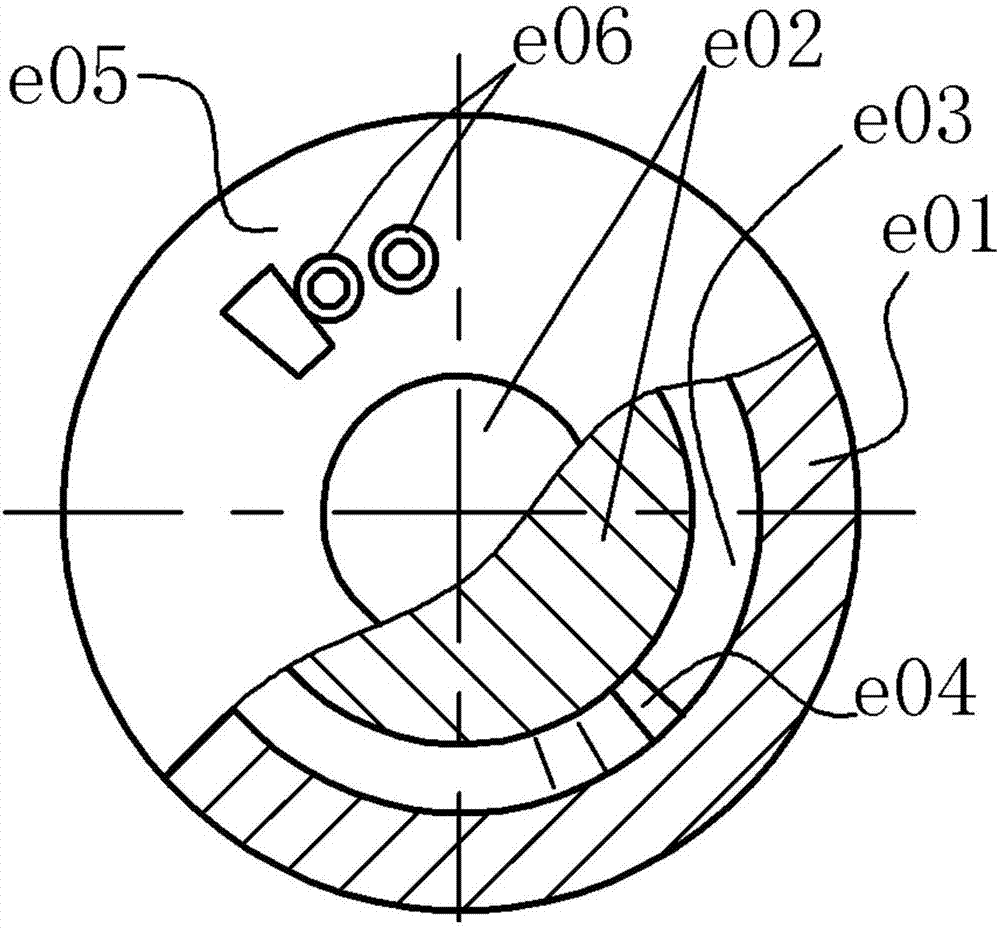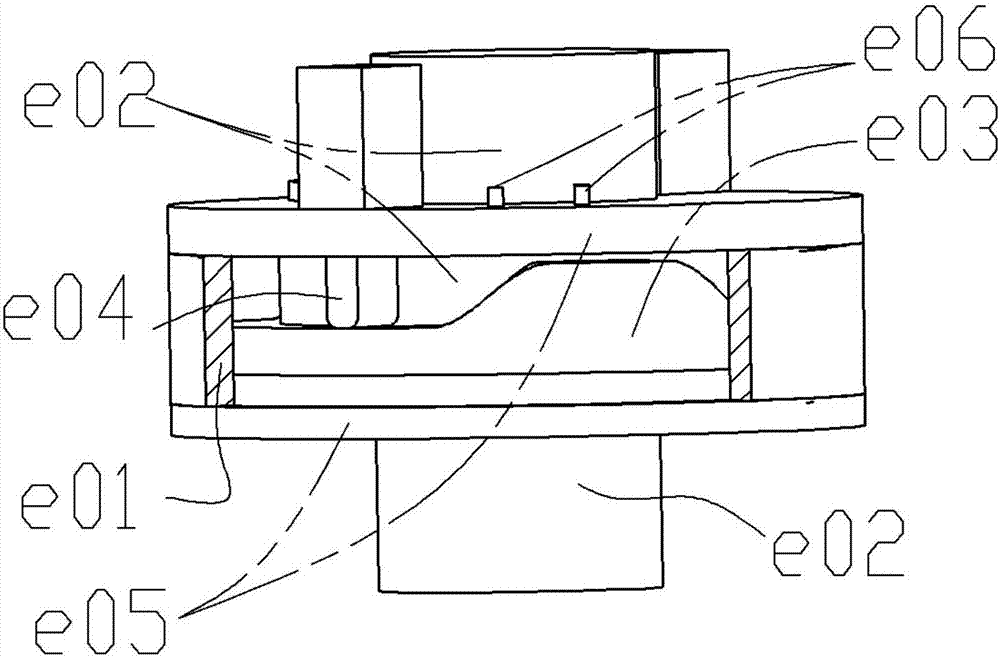Cylindrical cam rotor internal combustion engine power system
An internal combustion engine, cylindrical cam technology, applied in the direction of internal combustion piston engine, combustion engine, machine/engine, etc., can solve the problems of limited scalability of triangular rotor internal combustion engine structure, difficult to improve rotor shaft torque, and high processing requirements for core parts. Achieve the effect of short motion transmission link, simple structure and large parameter range
- Summary
- Abstract
- Description
- Claims
- Application Information
AI Technical Summary
Problems solved by technology
Method used
Image
Examples
Embodiment 1
[0040] See Figure 1~3 , assuming that the rotor housing e01 is fixed, the end member e05 is sealed and fixedly connected with the rotor housing e01, and the cylindrical end surface cam e03 and the mandrel e02 are sealed and fixed as a whole to form the rotor; the cam e03 has a far rest area and a near rest area, and the far rest Both the angle of repose and the angle of near repose are slightly less than 180°. The number of sliders e04 is 2, arranged symmetrically. After assembly, the sealing relationship is the same as before and will not be repeated. The inner cylindrical surface of the rotor housing e01, the contour surface of the cam e03, the outer cylindrical surface of the mandrel e02 and the lower end surface of the upper end member e05 form an annular gap with varying height, and the two sliders e04 divide the annular gap into two working chambers. There are two air inlets and two exhaust ports e06, which are located on the end member e05. The more the far resting ...
Embodiment 2
[0052] and then pass Figure 5 and 6 Demonstrate a slightly more complex situation.
[0053] The rotor housing is combined with the end member as a fixed part, and the cylindrical cam and the mandrel are combined as a whole to make the rotor. There are three sliders on the end member to divide the annular gap into three sections evenly. The cylindrical cam has a far rest area and a near rest area respectively. The angle of repose is slightly less than 120°. The space between the two sliders is the working area. cavity or combustion chamber. Figure 5 and 6 The state of the corresponding valve and the working process in the cavity are shown by using the circumferential section development diagram of the working cavity at different positions of the cam. Same as the previous example, with three working chambers, each chamber initially has two possible working processes, so there are 8 different combined working modes. Only two are shown here, and the rest will not be discuss...
Embodiment 3
[0064] Figure 5 Show variability further.
[0065] As long as the circumferential space is large enough, the number of sliders and the number of cam protrusions (such as the far rest area) can be increased arbitrarily. With the addition of a slider escapement, the size of the working space to complete each working cycle can also be varied.
[0066] The parameter relationships selected below are only for the convenience and clarity of description, and are not limiting. In the figure, it is assumed that the far resting sections of the cam rotor are two evenly distributed, and the arc length of the resting sections is slightly larger than the corresponding arc lengths of the two adjacent sliders, so that the two sliders are retracted at the same time. The number of sliders is taken as 6 and evenly distributed, indicated by numbers. Each slider is controlled by the slider escapement, where "out of control" means that the slider has been released by the escapement, "controlled"...
PUM
 Login to View More
Login to View More Abstract
Description
Claims
Application Information
 Login to View More
Login to View More - R&D
- Intellectual Property
- Life Sciences
- Materials
- Tech Scout
- Unparalleled Data Quality
- Higher Quality Content
- 60% Fewer Hallucinations
Browse by: Latest US Patents, China's latest patents, Technical Efficacy Thesaurus, Application Domain, Technology Topic, Popular Technical Reports.
© 2025 PatSnap. All rights reserved.Legal|Privacy policy|Modern Slavery Act Transparency Statement|Sitemap|About US| Contact US: help@patsnap.com



